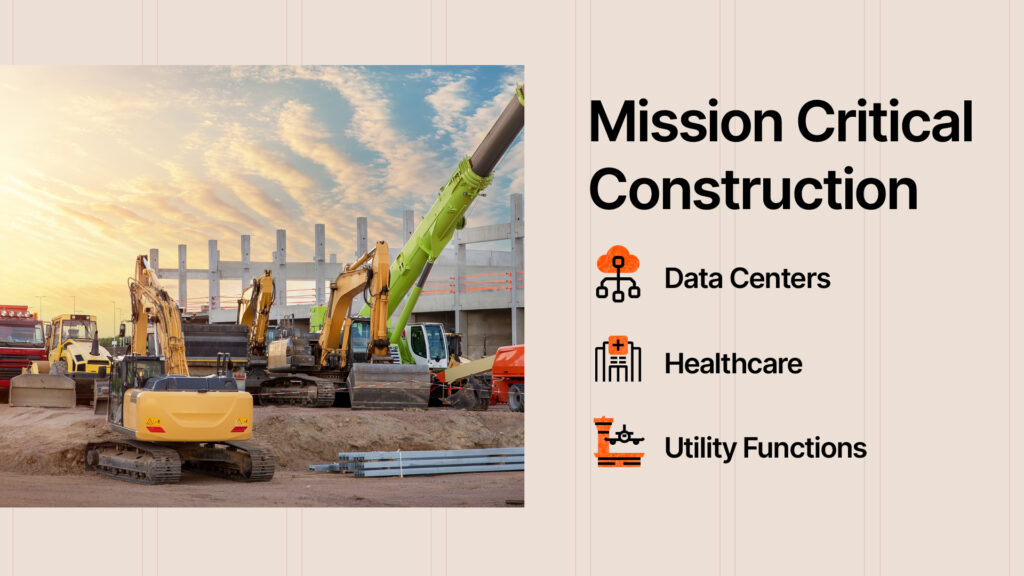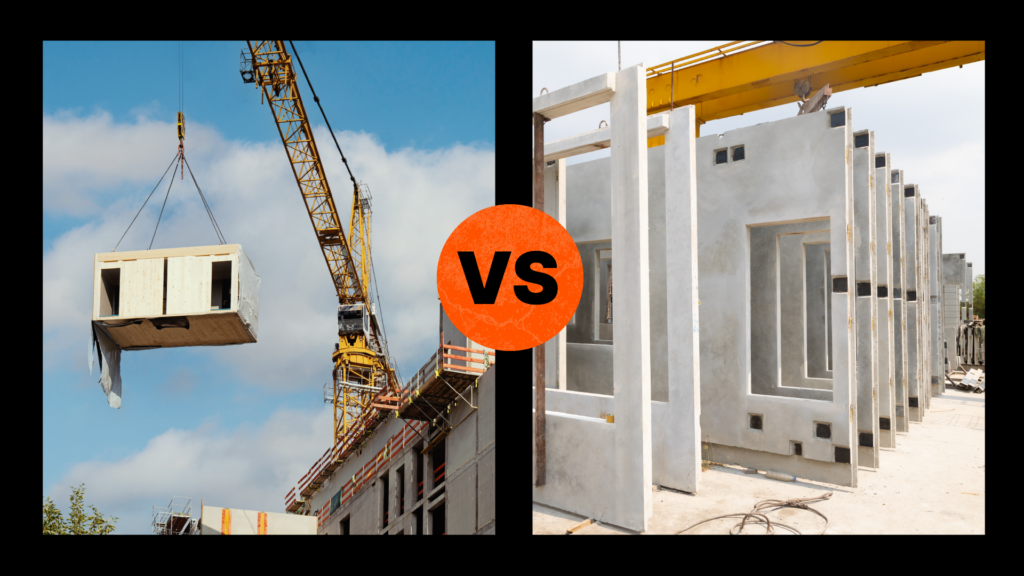— 7 min read
Construction Administration: Keeping Projects on Track While Mitigating Risk
Last Updated Nov 15, 2024
Last Updated Nov 15, 2024

Construction administration is a term not all general contractors will be familiar with — it's a catchall that includes multiple roles that are together responsible for contractual and administrative aspects of construction projects. Roles that fall under construction administration all play a large part in risk mitigation, post-adoption and ensuring compliance.
Let’s examine the roles and responsibilities of construction administrators and best practices for construction administration at any business.
Table of contents
Construction Administration vs. Construction Management
Construction administrators manage contractual and paperwork-centric elements of a project, ensuring smooth progress and adherence to obligations. Administrators handle contract preparation and negotiation, invoicing, changes, cost tracking and record-keeping, while also facilitating communication and resolving disputes within the project team.
They require attention to detail, understanding of contract and risk management, and expertise in project management systems. This role is distinct from, but complementary to, construction management. It focuses on the administrative side to support the successful completion of the project according to contract stipulations.
Construction managers oversee projects from kickoff to handover, including the orchestration of planning, coordination, and control to meet deadlines, budget constraints, and quality standards. Construction managers hire and manage subcontractors, oversee financial and timeline aspects, procure materials, and ensuring regulatory compliance. They act as the central liaison among clients, design teams, and contractors, facilitating clear communication and project cohesion.
Together, construction management and administration teams are essential for the seamless execution and delivery of construction projects.
| Construction Administration Team Roles | Construction Management Team Roles |
|---|---|
| Project Executive | Superintendent & Assistant Superintendent |
| Project Manager | Tradesmen |
| Project Administrator | Foreman |
| Project Engineer | Journeyman |
| Accounting | Apprentice |
| Purchasing | Inspectors |
Construction Administrator Responsibilities
While those working in construction administration are not typically on site, they are key person in project execution, even long after construction has actually concluded.
Preconstruction
Construction administration teams are responsible for leading estimating efforts. Those roles will need to decide how many hours estimators need to work, how many jobs they’re going to be estimating on, and what percentage of jobs they need to be winning in order to be of value.
Typically, this is a team composed of one lead estimator and several junior estimators who aim to win at least 30% of the bids they submit.
Project executives and operations managers will typically determine whether the effort the estimators are making is worthwhile and directed towards the correct jobs.
During preconstruction, administrators are responsible for maintaining all contracts and paperwork. They ensure budgets are adhered to and that all necessary inspections are scheduled and completed. They also need to secure temporary certificates of occupancy (TCO) as well as any other locally mandated permits. All of these milestones will be documented in the project bible and shared with the owner during handover.
Construction
A well-organized transition from preconstruction to the project management team is vital for a successful project launch, with clearly defined roles and responsibilities ensuring a smooth handoff of key information. If there is a significant lag time between project award and start date, handoff may involve explaining each estimate and updating them as necessary with related changes in the market and economy.
Project management teams also facilitate meetings with all important stakeholders. In ideal situations, these meetings include the owner, architect and contractor to make sure everyone has all the information they need to be successful.
Construction administrators will also coordinate with the master schedule and assist in securing finishing materials and subcontractors. While those working in construction management may be more focused on tasks that are more immediately at hand, construction administration has to keep lead times top of mind. In order to achieve the master schedule admins may need to pull some strings during the course of construction to accelerate off-site manufacturing (for example paying a premium to jump the line).
If any problems arise with documentation, contracts or procurement schedule, the construction administration team will work to swiftly resolve the issue. Change orders and new procurement will go through the construction administration team. They will be responsible for informing members of the construction management team, such as the superintendent, that inspectors need to be called at certain times or that municipalities need to be informed before work can begin.
During the course of construction, the admin team needs to carefully maintain all documentation. This includes inspection paperwork, certificates, contracts with suppliers and workers, and maintaining compliance with insurance.
Post Construction
Upon completion of a construction project, there's typically a one-year warranty period stipulated by either a certificate of occupancy (CO) or a temporary certificate of occupancy (TCO) where contractors must uphold the quality of their work in good faith. During this phase, project administrators handle the financial closeout, including final billings and releasing any retained amounts — often between 5% and 15% — held from subcontractors.
Additionally, the contractor must manage any warranty claims, discerning between genuine warranty issues and damage, which involves a minor return to project management tasks. This administrative period extends beyond the warranty year, with legal requirements dictating the retention of project and financial records, which can vary by jurisdiction but typically last for several years, such as seven years for legal documentation.
The end of the project thus shifts from active management to maintaining a readiness to address any after-service needs while ensuring all contractual and legal obligations are meticulously fulfilled.
Stay updated on what’s happening in construction.
Subscribe to Blueprint, Procore’s free construction newsletter, to get content from industry experts delivered straight to your inbox.

Best Practices for Construction Administration
Stay consistent.
Consistency is the cornerstone of a successful construction project, heavily relying on a firm's historical reputation and the momentum it has built. Establishing and maintaining a workplace culture centered on safety, community, and partnership from day one is critical for ensuring smooth operations in both the field and administrative aspects of the project.
Regular, well-structured meetings that respect participants' time help foster this culture, with attendance tailored to the project's phase to ensure efficiency and relevance. This consistent approach to communication and management practices, from inception through completion, is key to a project running smoothly and to avoid potential setbacks that are difficult to recover from once consistency is lost.
The consistent execution of these operational elements distinguishes successful construction management and promotes an easier and more coordinated work environment for everyone involved.
Document everything.
In construction administration, meticulous and timely documentation, ranging from photographic evidence to sign-offs and attendance records, is both a critical and burdensome task. Managers should diligently record every detail, understanding that thorough documentation serves as a safeguard.
The value of such documentation becomes most apparent in legal situations, where having concrete evidence can swiftly resolve challenges, as opposed to relying on memory alone. The act of documenting may seem tedious, but it's the unseen foundation that can protect a company from future liability and facilitate smoother resolution processes when issues are contested.
This emphasis on documentation is a testament to the adage "better safe than sorry," proving its worth in those pivotal moments when proof is necessary to corroborate claims and reinforce one's position.
Be proactive.
Inspections and procurement represent areas of overlap between construction administration and construction management, requiring coordination between both roles. The project executive must maintain an overall awareness of project needs, guiding the superintendent on when and how to engage with necessary inspections and other critical activities.
A significant challenge in project administration is maintaining an overview of the entire project while prioritizing tasks based on their impact on the project's end date, such as ordering a chandelier with a long lead time well in advance to ensure timely completion.
This comprehensive perspective ensures that critical and time-sensitive elements are managed effectively to adhere to the project timeline.
Construction administration holds projects together.
Construction administration is the glue that keeps projects running. From planning to handover, administrators have to stay on top of all documentation and the tasks that keep things on track. As the construction project landscape continues to evolve, administrators should think innovatively on managing tasks and processes.
Use of project management software to manage documentation and streamline communication bridges gaps between project teams and ensures everyone is on the same page.
Was this article helpful?
Thank you for your submission.
100%
0%
You voted that this article was . Was this a mistake? If so, change your vote here.
Scroll less, learn more about construction.
Subscribe to The Blueprint, Procore’s construction newsletter, to get content from industry experts delivered straight to your inbox.
By clicking this button, you agree to our Privacy Notice and Terms of Service.
Categories:
Tags:
Written by
Jacob Kunken
21 articles
Jake Kunken currently works as Solutions Engineer for Procore's Heavy Civil division. He brings 14 years of experience working in various construction roles in New York and Colorado, including laborer, assistant carpenter, carpenter, assistant superintendent, superintendent, construction manager, safety manager, and project manager. Jake also spent time in EHS as an environmental engineer for Skanska. He’s worked on more than 40 commercial projects from ground-up, to heavy civil, hospital work, and tenant improvement. Jake studied Ecological Technology Design at the University of Maryland.
View profileCait Bladt
12 articles
Cait Bladt is a multi-award winning freelance writer and producer. Her work has appeared at Vice, ABC News and Rolling Stone among others. She currently lives in Brooklyn with her cat Patricia.
View profileExplore more helpful resources

Mission Critical Construction: Strategies for Success
Mission critical construction involves building structures whose functions cannot afford to fail, as any disruptions can lead to significant consequences for society. Keeping data centers, hospitals, power plants and other...

Modular Construction and MEP: A Collaborative Pairing
In an age of supply chain disruptions, workforce shortages, and rising material costs, off-site construction — including modular construction methods and prefabricated materials — is surfacing as a multipurpose solution....

Connected Construction: Transforming the Industry Through Integration
Construction projects are becoming increasingly complex, so companies need to innovate to accurately and profitably complete these modern structures. Connected construction — using technology and data to improve communication, processes...

Off-Site Construction: Prefab vs. Modular
As the construction world becomes ever more competitive, deadlines get tighter and the margin for error gets slimmer, project owners around the world are always looking for an edge. Thanks...